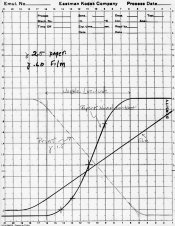I found a few quotes that might have some relevance. The very existence of this paper also suggests a continuing use of pictorial tests to confirm the practicality of speeds. It's from Grover,W.S. and Grimes, R.L., Improved Method for Determining the Speeds of Photographic Films by Pictorial Tests, Photographic Science and Engineering v. 11, n. 4, July-August 1967.
The paper is mostly about testing with color reversal but the basic principles are the same for b&W.
"It is their aim, in each instance, to find a sensitometric criterion that will be reasonably simple to operate, give good reproducibility, and yield sensitmetric speeds that correlate satisfactorily with the effective speeds of the film in normal picture taking practice."
"Films differing in D-log E curve shape were required for this study because almost any speed criterion is successful if the D-log E curve shape remains constant."
"Experience has shown that in picture test for speed derivation, there are six basic factors which must be controlled or chosen, namely:
1. Camera shutter and aperture calibration.
2. Subject composition and lighting geometry.
3. Solar altitude or sun angle.
4. Projection conditions.
5. Method of presentation of slides and judging techniques.
6. Conversion of exposure data to speeds."
"The judges are asked to ignore quality attributes that are not directly associated with exposure. These include color balance, model pose, composition, etc. However, every effort should be made to eliminate such undesirable variables from the sample."






